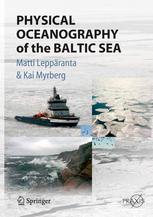

Most ebook files are in PDF format, so you can easily read them using various software such as Foxit Reader or directly on the Google Chrome browser.
Some ebook files are released by publishers in other formats such as .awz, .mobi, .epub, .fb2, etc. You may need to install specific software to read these formats on mobile/PC, such as Calibre.
Please read the tutorial at this link: https://ebookbell.com/faq
We offer FREE conversion to the popular formats you request; however, this may take some time. Therefore, right after payment, please email us, and we will try to provide the service as quickly as possible.
For some exceptional file formats or broken links (if any), please refrain from opening any disputes. Instead, email us first, and we will try to assist within a maximum of 6 hours.
EbookBell Team

0.0
0 reviewsThe Baltic Sea oceanographic research community is wide and the research history is over 100 years old. Nevertheless, there is still no single, coherent book on the physical oceanography of the Baltic Sea as a whole. There is a strong need for such a book, coming from working oceanographers as well as the university teaching programmes in advanced undergraduate to graduate levels.
In the regional conference series in physical oceanography (Baltic Sea Science Conference, Baltic Sea Oceanographers' conference, Baltex-conferences) about 500 scientists take part regularly. Even more scientists work in the fields of marine biology, chemistry and the environment, and they need information on the physics of the Baltic Sea as well. There are nine countries bordering on the Baltic Sea and five more in the runoff area. The Baltic Sea as a source of fish, means of transportation and leisure activities is highly important to the regional society. In the runoff area there are a total of 85 million people. Research and protection strategies need to be developed, as the Baltic Sea is probably the most polluted sea in the world.
Since the Baltic Sea has become an inner sea of the EU (apart from small shore parts of Russia in Petersburg and Kaliningrad), it is anticipated that the importance of the region will consequently rise. The book will arouse interest among students, scientists and decision makers involved with the Baltic problems. It will also give important background information for those working with biogeochemical processes in the Baltic Sea, because the physical forcing for those processes is of vital importance.